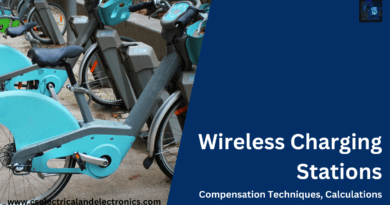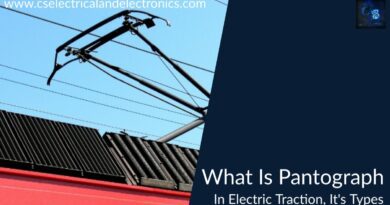What Kinds Of Sensors Are Used In Autonomous Vehicles
Hello guys, welcome back to our blog. Here in this article, we will discuss what kinds of sensors are used in Autonomous vehicles, the purpose of each sensor, and how many sensors are used in different autonomous vehicles.
If you have any electrical, electronics, and computer science doubts, then ask questions. You can also catch me on Instagram – CS Electrical & Electronics.
Also, read:
- Optical Circuit Breakers, Future Of Circuit Breakers In Power Systems
- Brain Computer Interfaces Technology, Beyond AI, ML, IoT, Blockchain
- Top Latest Electronic Sensors Only A Few Engineers Know
Sensors Are Used In Autonomous Vehicles
The quantity of sensors integrated into autonomous vehicles is intricately tied to their level of autonomy and the specific design choices meticulously made by the manufacturer. It is an essential facet of autonomous vehicle engineering, marked by a careful calibration of sensory prowess. In this sophisticated landscape, autonomous vehicles invariably encompass a multifaceted ensemble of sensors, including but not limited to cameras, radar systems, lidar technology, and ultrasonic sensors, each contributing their unique sensory capabilities.
01. Cameras, revered as the workhorses of sensor technology within autonomous vehicles, reign supreme in prevalence. They furnish a rich and vivid tapestry of the vehicle’s immediate surroundings, endowed with the capacity to adeptly discern pedestrians, fellow vehicles, and the subtle cues of traffic signals. Their optical acumen is a cornerstone of the vehicle’s perception, enabling it to navigate through the intricate web of the urban environment.
02. In contrast, radar systems are masters of electromagnetic waves, utilizing radio frequencies to astutely identify objects, meticulously gauge their proximity, and calculate their velocities. This radar technology, unfazed by the vagaries of low-light conditions and turbulent weather, stands resolute as an invaluable sensor, ensuring the vehicle’s situational awareness remains unwavering.
03. Lidar technology, a feat of precision engineering, harnesses the power of laser beams to sculpt a meticulous three-dimensional representation of the environment. This visual masterpiece, while offering unparalleled accuracy, occasionally bears the weight of a higher cost, serving as a testament to the relentless pursuit of precision in autonomous driving.
04. Ultrasonic sensors, a stalwart presence in the sensor arsenal, rely on the reverberation of sound waves to sense objects in proximity. Although their range may be limited to shorter distances, they are lauded for their cost-effectiveness and reliability in close-quarter scenarios, further bolstering the vehicle’s safety.
In the grand tapestry of autonomous technology, the cardinal rule is that as the vehicle’s autonomy level ascends, so does the demand for sensors. A prime illustration is a Level 3 autonomous vehicle, capable of self-navigating on highways under specific conditions, which may be adorned with no less than a dozen or more sensors. By stark contrast, a Level 5 autonomous vehicle, where full autonomy reigns supreme across all conceivable scenarios, could readily embrace a multitude of sensors, numbering 20 or more, to orchestrate its sensory symphony.
For empirical elucidation, consider these emblematic sensor configurations in select autonomous vehicles:
01. The Tesla Model 3, a paradigm of semi-autonomous driving, incorporates an ensemble of 8 cameras and an additional 12 ultrasonic sensors, creating a sensory mosaic that fuels its self-driving prowess.
02. Waymo One, a pioneering entity in autonomous ride-hailing, leaves no stone unturned with its sensor array, boasting an impressive repertoire of 14 cameras, 1 lidar sensor, and 5 radar sensors, collectively orchestrating an intricate sensory ballet.
03. The Cruise Origin, a harbinger of autonomous ride-sharing, raises the bar with an opulent sensor suite comprising 24 cameras, 5 lidar sensors, 16 radar sensors, and 1 ultrasonic sensor, leaving no sensory dimension uncharted.
While the future promises advancements in autonomous vehicle technology, it is firmly expected that the number of sensors required will experience a gradual reduction. This trajectory towards efficiency will be underpinned by the relentless innovation of sensors, rendering them more robust and economically accessible. Nonetheless, even in the era of fully realized Level 5 autonomous vehicles, the deployment of an ensemble of sensors will remain a fundamental necessity, cementing their pivotal role in furnishing an all-encompassing and unwavering assessment of the vehicle’s dynamic surroundings, thereby safeguarding the journey towards the autonomous horizon.
This was about “Sensors Are Used In Autonomous Vehicles“. I hope this article may help you all a lot. Thank you for reading.
Also, read:
- 100 + Electrical Engineering Projects For Students, Engineers
- 1000+ Electronics Projects For Engineers, Diploma, MTech Students
- 1000+ MATLAB Simulink Projects For MTech, Engineering Students
- 500+ Embedded System Projects For Engineer, Diploma, MTech, PhD
- 500+ Projects For Diploma Electrical, Electronics Student, Diploma Project
- 8051 Microcontroller Timers, TCON Register, TMOD Register
- Advancements In 3D Printing Technology And It’s Future
- Advancements In Power Electronics For Energy Efficiency
Author Profile
- Chetu
- Interest's ~ Engineering | Entrepreneurship | Politics | History | Travelling | Content Writing | Technology | Cooking
Latest entries
 All PostsApril 19, 2024What Is Vector CANoe Tool, Why It Is Used In The Automotive Industry
All PostsApril 19, 2024What Is Vector CANoe Tool, Why It Is Used In The Automotive Industry All PostsApril 13, 2024What Is TCM, Transmission Control Module, Working, Purpose,
All PostsApril 13, 2024What Is TCM, Transmission Control Module, Working, Purpose, All PostsApril 12, 2024Top 100 HiL hardware in loop Interview Questions With Answers For Engineers
All PostsApril 12, 2024Top 100 HiL hardware in loop Interview Questions With Answers For Engineers All PostsMarch 22, 2024Driver Monitoring Systems In Vehicles, Working, Driver Sleepy Alert
All PostsMarch 22, 2024Driver Monitoring Systems In Vehicles, Working, Driver Sleepy Alert








